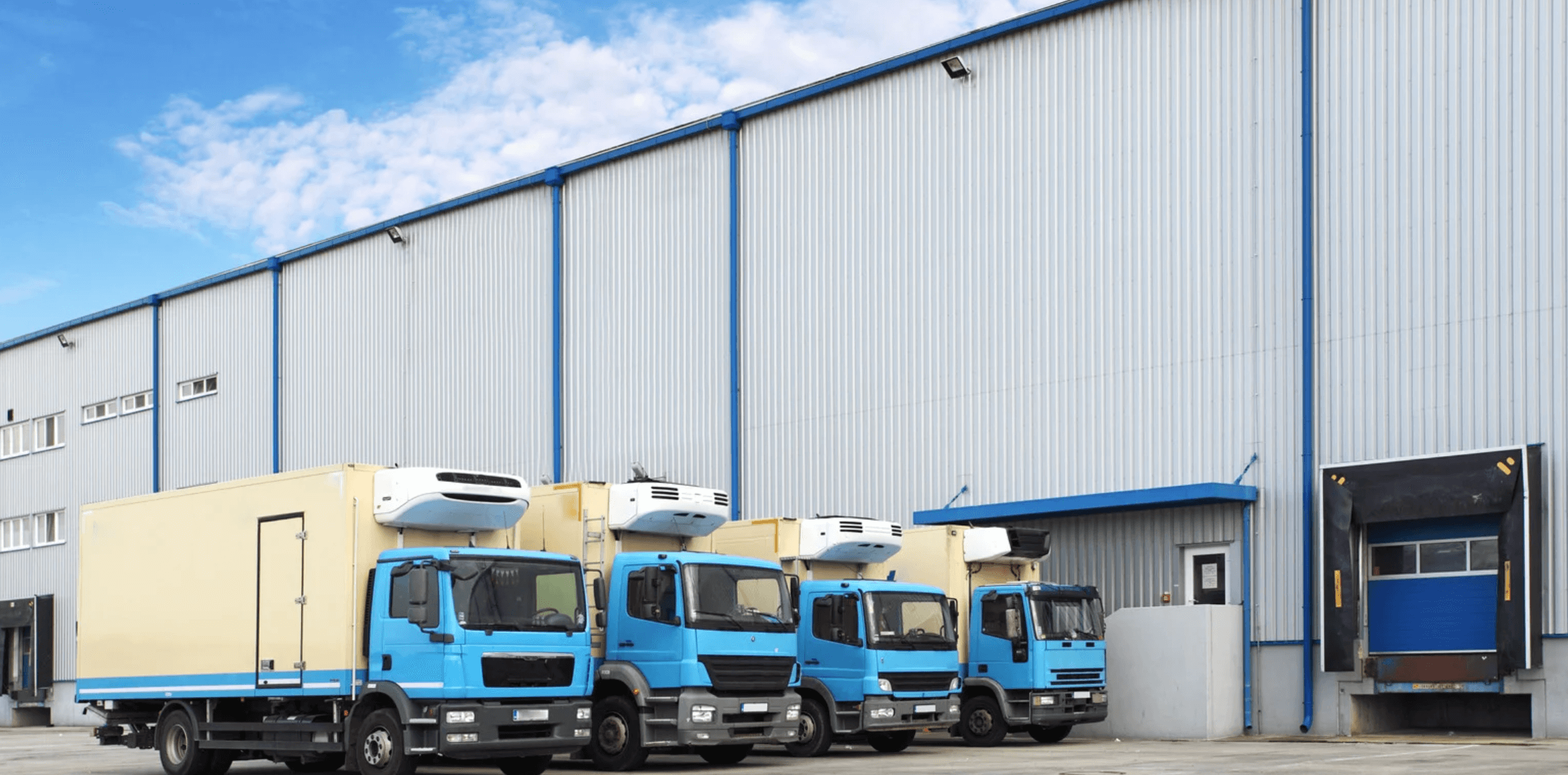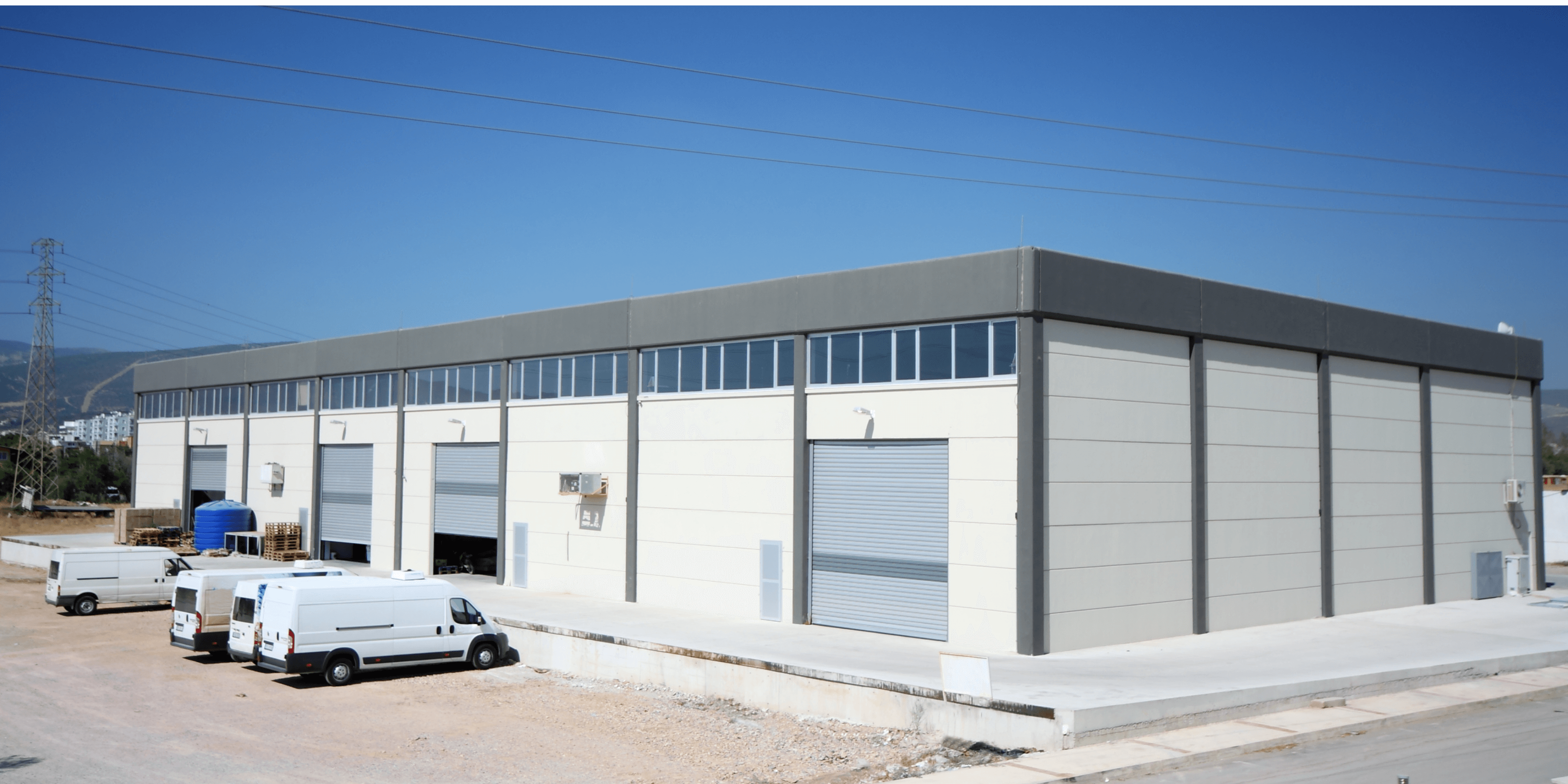Modern logistics warehouses are the unsung heroes of global commerce, processing billions of orders while most consumers never think about the complex operations behind their next-day deliveries. These sophisticated facilities have evolved far beyond simple storage spaces into strategic command centers that can make or break a company’s competitive advantage.
In today’s fast-paced economy, a well-optimized logistics warehouse can reduce operational costs by 25-40% while improving order accuracy to 99.5%. Yet many businesses still operate with outdated systems and inefficient processes, leaving money on the table and customers frustrated with delayed shipments.
This comprehensive guide will transform how you think about warehouse operations, revealing the strategies and technologies that industry leaders use to achieve remarkable efficiency gains and customer satisfaction improvements.
Key Takeaways
- Logistics warehouses are strategic hubs that coordinate inventory flow, optimize storage, and ensure timely order fulfillment across the supply chain
- Modern warehouse management systems (WMS) and automation technologies reduce operational costs by 15-25% while improving accuracy rates to 99.5%
- Strategic warehouse layout design can increase storage capacity by 30-40% without expanding physical footprint
- Effective logistics warehouse operations require integration of receiving, storage, picking, packing, and shipping processes
- Real-time inventory tracking and data analytics enable proactive decision-making and continuous operational improvements
What is a Logistics Warehouse?
A logistics warehouse is a centralized facility that manages the entire inventory flow from suppliers to end customers, serving as the nerve center of modern supply chains. Unlike traditional warehouses that focused primarily on static storage, today’s logistics warehouses are dynamic hubs where goods are received, processed, stored strategically, and distributed with precision timing.
The core functions that define warehouse logistics include receiving goods with quality control protocols, implementing systematic storage management to maximize space and accessibility, processing orders through optimized picking and packing operations, and coordinating distribution to meet demanding delivery schedules. These warehouse operations work together to regulate goods flow and bridge gaps between supply and demand, ensuring uninterrupted production and timely order fulfillment.

Modern logistics operations encompass several key components that enhance efficiency beyond basic storage. Quality control inspections verify incoming shipments, while sophisticated inventory tracking systems provide real-time visibility into stock levels and locations. Documentation and information flow management ensures accurate data throughout the entire process, from receiving to final delivery.
Types of Logistics Warehouses
The warehouse logistics landscape includes several specialized facility types, each designed to serve specific operational needs:
Distribution centers focus on rapid movement and redistribution of stock, typically serving retailers or regional markets. These facilities prioritize speed over long-term storage, with goods often moving through within 24-48 hours.
Fulfillment centers handle online order processing, specializing in picking, packing, and direct shipment to customers. These facilities have become critical for e-commerce operations, where customer demand for fast delivery drives operational efficiency requirements.
Cross-docking facilities minimize storage time by directly transferring goods from inbound to outbound vehicles. This approach works particularly well for time-sensitive products or high-turnover items where storage costs outweigh the benefits of inventory buffering.
Each type serves different supply chain management strategies, but all share the common goal of optimizing the physical flow of goods while minimizing operating costs and maximizing customer satisfaction.
Essential Components of Logistics Warehouse Operations
Effective warehouse logistics depend on seamlessly integrated processes that work together like a well-orchestrated symphony. Each component contributes to overall operational efficiency, and weakness in any single area can create bottlenecks that affect the entire process.
The interconnected nature of warehouse tasks means that optimization efforts must consider the entire process rather than individual components in isolation. When properly integrated, these systems can significantly improve throughput while reducing both operational costs and error rates.
Receiving and Inbound Processing
The receiving process sets the foundation for all downstream warehouse operations. Proper training for receiving staff ensures that goods are unloaded efficiently while maintaining quality standards. Modern facilities employ barcode scanning and RFID tagging systems to rapidly capture product information and register inventory in real-time.
Quality inspection protocols during receiving prevent damaged or incorrect items from entering the warehouse space, avoiding costly problems later in the process. Appointment scheduling systems coordinate truck arrivals to prevent dock congestion, while dock management tools optimize vehicle flow and reduce dwell time.
Cross-docking operations for time-sensitive shipments require specialized coordination between inbound and outbound schedules. This approach can dramatically reduce storage costs and delivery times for products that don’t require long-term storage.
Storage and Inventory Management
Strategic storage management balances accessibility with space efficiency, using various systems like selective racking for high-turnover items and drive-in racks for bulk storage. Automated storage and retrieval systems (ASRS) maximize vertical space utilization while reducing labor costs for facilities with appropriate volume levels.
ABC analysis for inventory classification helps optimize product placement, with high-turnover items stored in easily accessible locations to reduce travel time during order picking. This systematic approach to improve inventory management can increase picking productivity by 20-30% compared to random storage methods.
Space optimization techniques include vertical storage solutions that can double or triple usable floor space without facility expansion. Temperature-controlled storage areas serve specialized products while maintaining the flexibility to adjust space allocation based on changing demand patterns.
Order Fulfillment and Picking Operations
Order picking represents the most labor-intensive aspect of warehouse operations, making optimization critical for controlling operating costs. Different picking strategies serve various operational needs:
Batch picking groups multiple orders together, reducing travel time when multiple customers order similar items. Zone picking assigns workers to specific warehouse areas, developing expertise in particular product categories. Wave picking coordinates picking activities with shipping schedules, ensuring orders are ready precisely when needed.
Modern facilities employ pick-by-light systems that guide workers to correct locations while displaying exact quantities needed. Pick-by-voice technology keeps workers’ hands free while providing audio instructions, particularly effective in noisy environments or for workers who struggle with visual systems.
Returns processing and reverse logistics require dedicated workflows for inspection, restocking, or disposal decisions. Efficient returns management protects profit margins while maintaining customer satisfaction through quick refunds or exchanges.

Warehouse Management Systems and Technology
A warehouse management system serves as the digital nerve center that coordinates every aspect of warehouse operations. These smart systems provide real-time inventory visibility, automate location assignments, and manage task distribution for both staff and equipment.
Modern WMS implementations integrate seamlessly with existing ERP systems and transportation management platforms, creating a unified view of supply chain operations. This integration enables informed decisions based on real-time data from across the entire process.
The productivity improvements from WMS deployment are substantial and measurable. Facilities typically see 20-30% increases in operational efficiency, with inventory accuracy improving from manual system rates of 95% or lower to 99.5% or higher. These improvements translate directly to reduced operational expenses and improved customer satisfaction.
Advanced Automation Solutions
Automated guided vehicles (AGVs) and autonomous mobile robots (AMRs) transform material handling by reducing labor requirements while increasing throughput consistency. These systems work continuously without breaks, maintaining steady productivity levels that human workers cannot match over extended periods.
Robotic picking systems achieve accuracy rates of 99.9%, surpassing manual picking accuracy by significant margins. While the initial investment can be substantial, the lower labor costs and improved accuracy typically generate positive ROI within 2-3 years for high-volume operations.
Automated conveyor systems move goods seamlessly between different zones, integrating with warehouse control systems (WCS) that synchronize machine actions with WMS directives. This coordination ensures smooth operations even during peak demand periods.
Data Analytics and Performance Monitoring
Real-time data analytics enable proactive management decisions that prevent problems before they impact customer service. Key performance indicators include inventory accuracy (targeting >99%), cycle time from order receipt to shipment, picking productivity measured in lines per hour, and shipping accuracy rates.
Predictive analytics help forecast demand patterns and optimize workforce allocation, reducing the need for expensive overtime during unexpected volume spikes. Top-performing facilities use these insights to maintain service levels while controlling costs.
Performance monitoring dashboards provide immediate visibility into operational metrics, allowing warehouse managers to identify trends and respond quickly to emerging issues. Historical performance reports support continuous improvement initiatives and help justify technology investments.
Benefits of Optimized Logistics Warehouse Operations
Optimized warehouse logistics deliver quantifiable improvements across multiple operational and financial metrics. These benefits compound over time, creating sustainable competitive advantages that become increasingly difficult for competitors to match.
Cost Reduction and Efficiency Gains
Labor cost reductions through automation and improved processes typically range from 25-40%, with the largest savings coming from reduced picking times and improved accuracy. Automated storage systems can cut storage costs by maximizing space utilization without facility expansion.
Transportation costs decrease through better load consolidation and more accurate scheduling deliveries. Optimized inventory management reduces carrying costs by maintaining appropriate stock levels without excess safety stock that ties up working capital.
Energy efficiency improvements through modern lighting systems, optimized HVAC systems, and improved building design can reduce utility costs by 20-30%. These savings contribute to improved overall productivity while supporting sustainability initiatives.
Enhanced Customer Service and Accuracy
Order accuracy improvements from 95% to 99.5% dramatically reduce customer service costs while building customer loyalty. Faster order processing enables shorter delivery times, meeting customer expectations for rapid fulfillment.
Real-time order tracking capabilities improve customer communication and reduce inquiry call volumes. Efficient returns processing maintains customer relationships while protecting profit margins through faster restocking decisions.
Improved customer satisfaction leads to higher retention rates and increased order frequency, creating a positive feedback loop that supports continued business growth.

Common Challenges and Solutions
Even well-designed logistics warehouse operations face common challenges that require ongoing attention and systematic solutions. Understanding these challenges and implementing proven solutions prevents minor issues from becoming major operational disruptions.
Inventory Management Challenges
Stockout prevention requires balancing carrying costs with service level requirements. Advanced demand forecasting tools help optimize safety stock levels while reducing the risk of disappointing customers with unavailable products.
Cycle counting procedures maintain inventory accuracy between physical inventory counts, catching discrepancies before they impact customer orders. Regular cycle counting programs typically maintain accuracy levels above 99% when properly implemented.
Obsolete inventory management protects profit margins by identifying slow-moving products before they become worthless. Systematic liquidation strategies recover maximum value from products that cannot be sold through normal channels.
Seasonal demand fluctuation management requires flexible staffing strategies and space allocation plans. Successful facilities develop relationships with temporary staffing agencies and cross-train permanent employees to handle volume variations.
Operational Efficiency Bottlenecks
Workflow disruption resolution requires systematic problem identification and rapid response capabilities. Regular performance monitoring helps identify emerging bottlenecks before they impact customer service levels.
Peak season capacity planning involves both human resources and equipment considerations. Facilities that successfully manage seasonal peaks typically plan staffing and equipment needs months in advance.
Equipment maintenance schedules prevent unexpected downtime that can disrupt entire operations. Predictive maintenance programs use sensor data to schedule maintenance before failures occur, minimizing operational disruptions.
Quality control procedures at each process stage catch errors early when correction costs are minimal. Comprehensive quality programs reduce overall costs while improving customer satisfaction.
Best Practices for Logistics Warehouse Management
Implementing proven best practices ensures that logistics warehouse investments deliver expected returns while creating foundations for continuous improvement. These practices have been tested across thousands of facilities and consistently deliver superior results.
Staff Training and Development
Comprehensive employee training programs cover WMS operation, safety protocols, and equipment operation procedures. Well-trained employees are more productive, safer, and better able to adapt to changing operational needs.
Cross-training strategies create operational flexibility by ensuring multiple employees can perform critical warehouse tasks. This flexibility reduces vulnerability to absences while creating career development opportunities for employees.
Performance measurement and incentive programs align employee behavior with operational goals. Effective programs reward both individual achievement and team collaboration, creating positive workplace cultures that support retention.
Continuous Improvement Strategies
Lean manufacturing principles applied to warehouse operations eliminate waste while improving efficiency. Regular process reviews identify opportunities for improvement and ensure that changes deliver expected benefits.
Supplier collaboration programs share real-time data to improve inbound scheduling and reduce receiving bottlenecks. Strong supplier relationships also support rapid resolution of quality issues or delivery problems.
Technology upgrade planning ensures that facilities stay current with evolving capabilities while maximizing returns on existing investments. Systematic upgrade approaches prevent technological obsolescence while managing capital expenditure requirements.
Future Trends in Logistics Warehouse Operations
The logistics warehouse industry continues evolving rapidly, driven by technological advances and changing customer expectations. Understanding emerging trends helps businesses prepare for future opportunities while avoiding obsolete investments.

Artificial Intelligence and Machine Learning
AI applications in demand forecasting provide more accurate predictions than traditional statistical methods, enabling better inventory planning and space allocation decisions. Machine learning algorithms continuously improve performance by learning from historical patterns and adapting to changing conditions.
Predictive maintenance systems use IoT sensors and AI analysis to schedule equipment maintenance before failures occur. These systems can reduce maintenance costs by 20-30% while virtually eliminating unexpected downtime.
Route optimization algorithms improve picking efficiency by calculating optimal travel paths through warehouse space. Advanced systems consider real-time conditions like congestion and equipment availability to maximize productivity.
Sustainability and Green Logistics
Energy-efficient warehouse designs incorporate LED lighting, improved insulation, and renewable energy systems to reduce environmental impact while lowering operating costs. Many facilities achieve 30-40% reductions in energy consumption through comprehensive efficiency programs.
Sustainable packaging solutions reduce waste while maintaining product protection standards. These initiatives often reduce packaging costs while meeting customer expectations for environmental responsibility.
Carbon footprint reduction programs track and minimize greenhouse gas emissions from warehouse operations. Many companies find that sustainability initiatives also reduce costs through improved efficiency and waste reduction.
FAQ
What is the difference between a warehouse and a logistics warehouse?
A traditional warehouse primarily focuses on static storage of goods, while a logistics warehouse is a dynamic hub that manages the entire flow of inventory through receiving, storage, picking, packing, and shipping operations. Logistics warehouses integrate value-added services and real-time data management to optimize supply chain efficiency.
How much does it cost to implement a warehouse management system?
WMS implementation costs typically range from $100,000 for small businesses to over $1 million for enterprise-level systems. The investment usually pays for itself within 18-36 months through improved efficiency, reduced labor costs, and better inventory accuracy.
What are the key metrics to measure warehouse performance?
Critical KPIs include inventory accuracy (targeting >99%), order cycle time, picking productivity (lines per hour), shipping accuracy, and cost per order. Top-performing facilities also track employee safety metrics and customer satisfaction scores.
How long does it take to see ROI from warehouse automation?
Most warehouse automation investments generate positive ROI within 1-3 years, with high-volume operations often seeing returns in under 12 months. The exact timeframe depends on current labor costs, volume levels, and the scope of automation implemented.
What safety regulations apply to logistics warehouse operations?
In the United States, OSHA regulations govern warehouse safety requirements, including equipment operation standards, training requirements, and hazard communication protocols. Regular safety audits and employee training programs ensure compliance while protecting workers.
How can small businesses benefit from logistics warehouse optimization?
Small businesses can achieve significant benefits through improved inventory control, faster order fulfillment, better accuracy rates, and enhanced customer experience. Even basic WMS implementations and layout optimization can deliver 15-25% efficiency improvements.
What training is required for warehouse management system operators?
WMS operators need training in system navigation, inventory procedures, order processing, and basic troubleshooting. Most systems require 2-4 weeks of initial training, with ongoing education to maintain proficiency and learn new features.
How do you calculate optimal inventory levels for a logistics warehouse?
Optimal inventory calculations combine historical demand data, supplier lead times, and safety stock requirements. ABC analysis helps prioritize high-value items, while demand forecasting tools predict future requirements to minimize both stockouts and excess inventory.
The logistics warehouse revolution is reshaping how businesses compete in today’s market. Companies that embrace these advanced operational strategies and technologies position themselves for sustained growth while those that cling to outdated methods risk being left behind. The time to transform your warehouse operations is now – the competitive advantages waiting to be unlocked are too significant to ignore.



